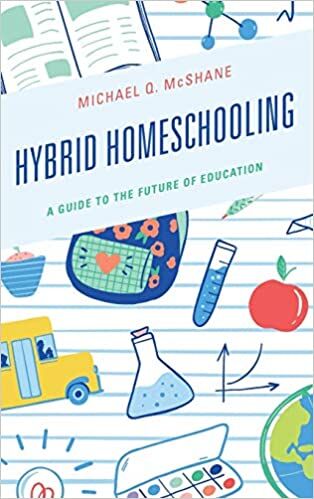Education
Hybrid Homeschooling and the Future of School
A conversation with Mike McShane of EdChoice.
Posted December 21, 2021 Reviewed by Kaja Perina
Many parents, like myself, found themselves working at home with their kids right next to them during the pandemic. In fact, I spent a full school year doing a “hybrid” 1st grade schedule with one of my kids: he attended traditional public school in the building for two days and was at home for three days. In the at-home phase, I oversaw his learning through various assignments including reading aloud to me. His teacher was wonderful and flexible and it worked out as well as it could.
At the same time, I discovered that once he got his work done in a fairly concentrated span of time, he had lots of free time in the afternoon to do other things, such as work on math and reading computer programs, and yes, even watch TV (just a little, I promise!). Now that both my kids are back to full time in person public schooling I’m very relieved, but my experience with my older son at home made me realize that there are many different possibilities for educating children both inside and outside schools.
Michael McShane, director of national research at EdChoice, recently wrote a book that I found informative and fascinating titled Hybrid Homeschooling: A Guide to the Future of Education. Many parents have started to explore various educational options during the pandemic, and Mike’s book is an excellent and clearly written text explaining the role that hybrid homeschooling might play in the future of education. Mike kindly responded to a few of my questions.
What is hybrid homeschooling?
Hybrid homeschooling is a form of education where children attend formal classes in traditional brick-and-mortar classrooms for part of the week and work from home the other part of the week. Different schools do it differently, with some having students in school for two days a week and home for three, in school for three and home for two, or other combinations. Now, there is a lot of fuzziness around the edges of a good definition of hybrid homeschooling, as some homeschool co-ops might meet regularly enough to appear to be hybrid homeschools, and some public schools allow children to enroll part time (and have for decades). I tend to use a three-part definition, regular, substantial, and physical. That is, a hybrid homeschool (or hybrid homeschool program within a school) meets at regular intervals, for at least one school day a week, in a physical school building.

Why might parents consider it?
When I interviewed parents who hybrid homeschooled their children (and these were parents who were hybrid homeschooling before the pandemic), they gave me a few reasons for their choice. A phrase that I heard over and over again was “the gift of time.” Many of these parents feel that the typical school day, week, and year are out of sync with the rhythms of their family. Students lurch from school to extracurriculars to homework to sleep without time for family bonding. Parents want to reclaim some of that time.
Parents also appreciate the personalized attention that hybrid homeschooling offers. While students might be in a typical classroom for part of the week, they then come home for the other part of the week, where they can get close support from their parents. It’s a kind of best-of-both worlds approach, with the benefits from having a classroom learning community and all of the good things that a traditional school arrangement offers with the individualization and personalization that homeschooling provides.
Several hybrid homeschooling parents also spoke to me about the mental health benefits that the alternative school schedule had for their children. I’ll never forget a mother telling me that she would always tell her son after he had a bad day, “you don’t have to go back tomorrow.” I’m a former high school teacher and remember students whose bad Monday became an even worse Tuesday and the rest of the week went downhill from there. In schools that alternate between in-person and at-home learning, struggling students get a chance to reset and start fresh each day.
What are your thoughts on the future of schooling?
Our polling at EdChoice shows that a large percentage of parents would like to see some kind of hybrid school schedule for their children. There is a huge opportunity for schools across sectors—traditional public, charter, and private—to work to create new schedules and calendars to meet the needs and desires of families. As the world of work changes and schedules become more flexible and work locations migrate, more opportunities will be available for experimentation in the where and when of school. Innovative and entrepreneurial educators are already rising to the challenge and I imagine more will do so in the future.
But there is one thing that cannot, or at least should not, get lost in all of the excitement around new school models and new educational modalities: schools are communities. I’m bullish on the future of hybrid homeschooling because both parents and teachers that I interviewed spoke about how tight knit hybrid homeschooling communities are, how when the pandemic struck they really looked out for each other and supported each other because they knew and trusted one another. They are tight knit because they are trying to do something different and they have to work together to do it. Petty differences become less important when there is work to do.
Given the disruption of coronavirus and the atomization, lack of trust, and alienation that it both caused and uncovered, families are crying out to be reconnected to community. Schools that prioritize the needs of families and understand how schooling fits into the broader ecosystem of a child’s life will find lots of folks interested and eager to enroll.
References
McShane, M. Q. (2021). Hybrid homeschooling: A guide to the future of education. Rowman & Littlefield.




